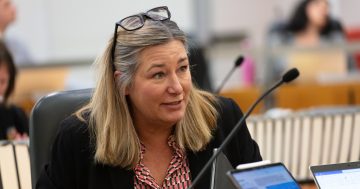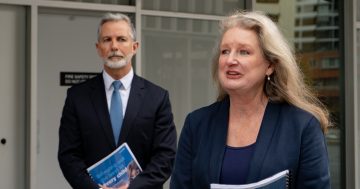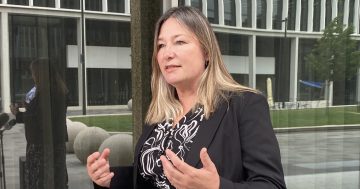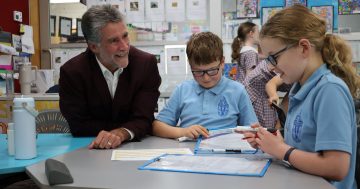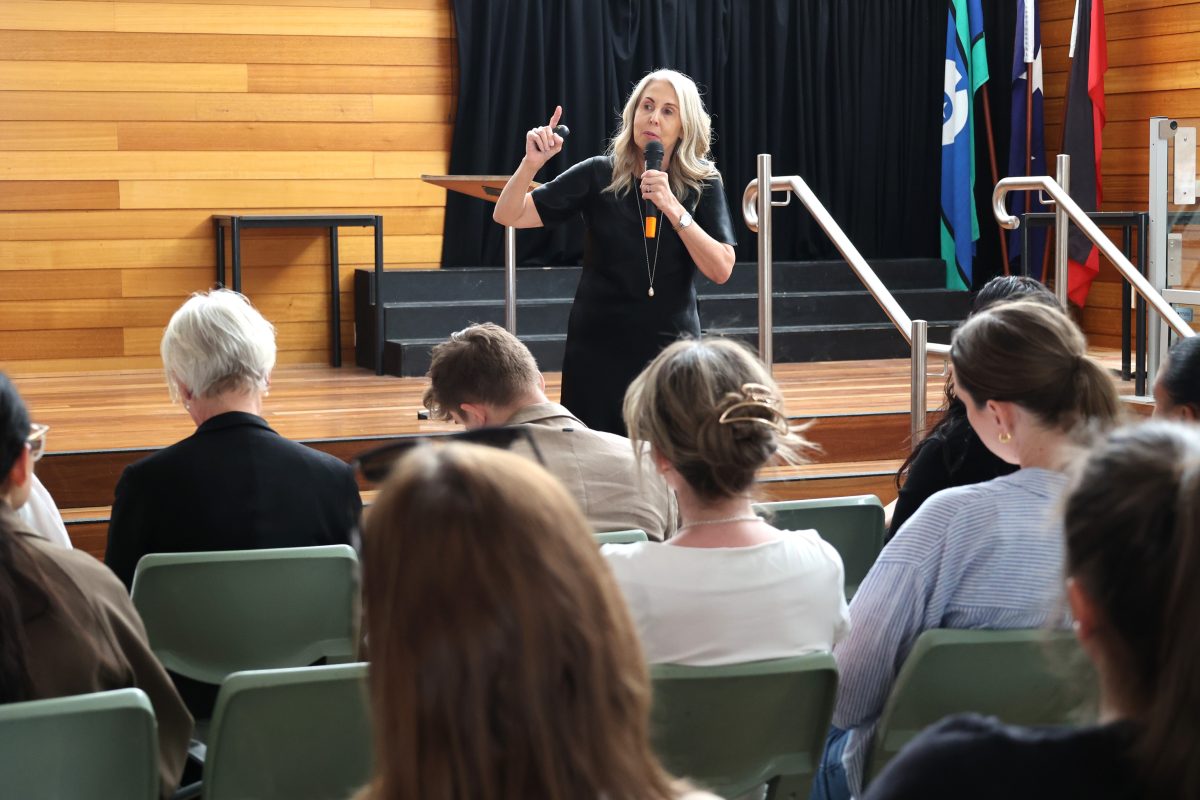
Dr Lorraine Hammond makes a point during her keynote address. “If there’s no attention, there’s no learning. I say with explicit teaching: are they paying attention? Are they thinking? Are they practising?” Photos: Kylie Coll/Catholic Education.
The ACT Education Directorate will have to mobilise teachers who are willing to change their way of doing things if the Strong Foundations literacy and numeracy overhaul is to take hold in Canberra’s government schools, according to a pioneer of the science of learning and explicit teaching movement.
Dr Lorraine Hammond from Edith Cowan University in Western Australia, who has been a big influence on the Canberra region Catholic schools’ adoption of the successful Catalyst high-impact teaching program, is in the national capital for three days of professional development with teachers and students at Holy Family Primary School in Gowrie.
Fifty teachers have given up three days of their holidays to be coached by Dr Hammond and her team from Edith Cowan, along with a group of primary school students who have also given up their time to help them hone their skills.
The teachers are mainly from ACT Catholic schools; none are from government schools.
In light of the recent literacy and numeracy inquiry, perhaps some should be attending.
Dr Hammond, who made a submission to the inquiry, said the directorate should bypass those attached to the past and start with a “coalition of the willing”.
“It’s very important to do that,” she said.
“You need some lighthouse schools. I know that you’ve got the Catholic schools down the road, but I’m not entirely sure how willing and enthusiastic government teachers might be going to Catholic schools.”
Dr Hammond said the barriers were significant, and if the government schools wanted to do it well, they would need to do a stocktake to preempt the barriers.
“The barriers will be the people who don’t want to do it,” she said.
“That’s OK. Just leave them to one side initially and let’s get some people going.
“And then, because teachers are altruistic and they want the best, it just creeps very, very quickly, because then parents are like, ‘Well, hang on, what’s happening at that school down the road, they’re doing this. Why aren’t we doing that, too?'”
Dr Hammond said the resistance to change was purely ideological and had sprung out of the child-centred and collaborative education movement.
But the weight of evidence and data eventually found these approaches wanting, especially when it came to literacy.
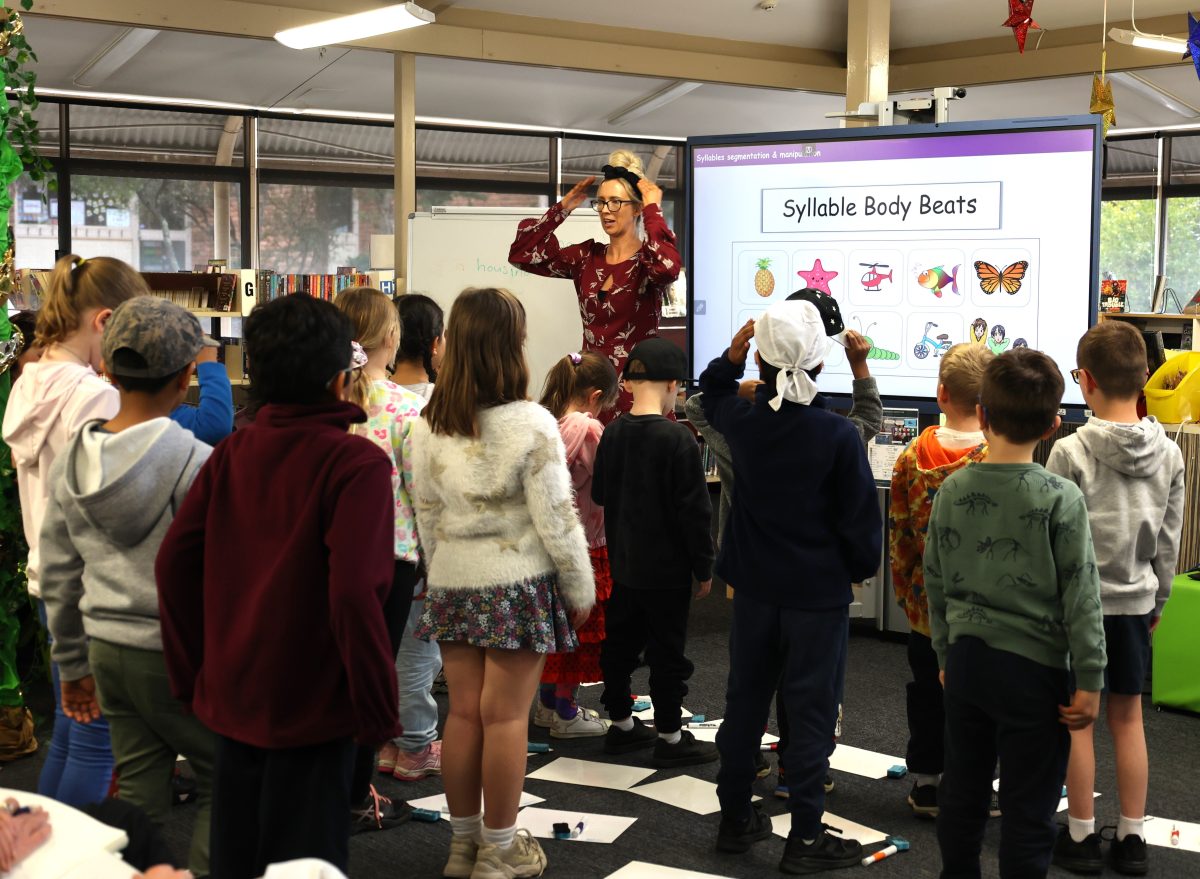
Brooke Wardana demonstrates a literacy exercise during the high-impact teaching practice intensive at Holy Family Primary School in Gowrie.
Dr Hammond said it was a case of accept change or go, if the reforms were to be successful.
“If you deeply hold beliefs about pedagogy, and about teaching reading and literacy and numeracy, and they’re a bit outdated now, people have to kind of either give them up or retire,” she said.
“I mean, it’s no good hanging on to them.”
Dr Hammond said the balanced literacy approach, which still includes the now discredited whole reading method, remained a force in ACT Government schools.
She said the work of directorate advisers was still privileging a very balanced literacy approach.
“There’s nobody endorsing that right now, so there is a need to catch up quickly.”
Dr Hammond has worked with low socio-economic schools in Perth and the Kimberleys, where students suffered real disadvantages, and the results put better-off schools to shame.
She said ACT Government teachers would have to put their socio-economic pride to one side and realise teaching was not a socio-economic issue but an instructional one, and no child should be left behind.
“To get to 100 per cent reading, you’ve got to go through the bottom 20 per cent, so this is going to help everybody.
“If we don’t go through that bottom 20 per cent they’re never going to learn how to read. That’s the position that Catalyst took as well.”
Dr Hammond also believes that beyond the teaching, the architecture and classroom setting must be right for learning, so it’s out with the open plan, desks must face the teacher and a reasonable amount of order and expectation must be restored to the classroom.
“It’s really important that you understand that you will come in, stand behind your desk, and wait. Then I say good morning, and then you’ll all sit down,” she said.
“Routines like that, and by some they’d be perceived as quite draconian, but routines like that establish a calm, orderly working environment for everybody.
“If there’s no attention, there’s no learning. I say with explicit teaching: are they paying attention? Are they thinking? Are they practising?
“That’s really what we’re trying to achieve.”
Schools faced many pressures, but ultimately, it was results that mattered.
“They look at their data: could we be doing better?” Dr Hammond said.
“For every Catholic school, there’s a government school right next door in Canberra, and that’s probably why that [literacy and numeracy] report was so pointed in the differences.”













